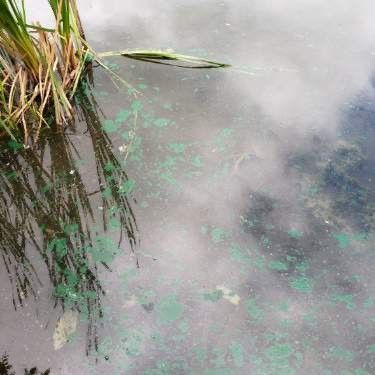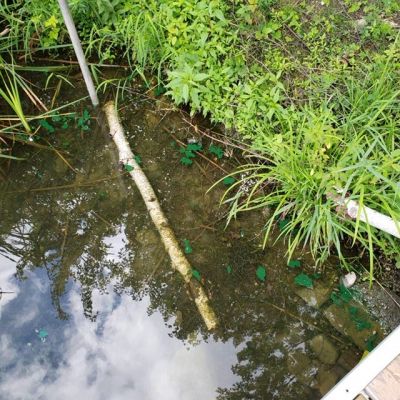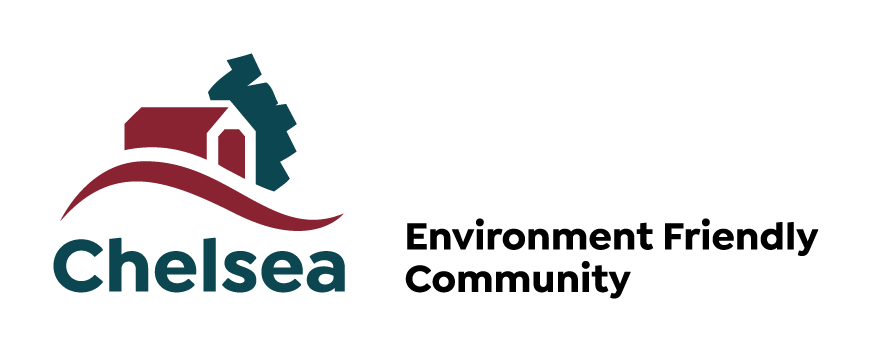Notice of cyanobacteria (blue-green algae) at Mountain (Beamish) lake
August 27, 2020
The Planning and Sustainable Development Services of the Municipality of Chelsea have been informed that a cyanobacteria (also called blue-green algae) bloom has been identified in Mountain (Beamish) Lake.
The Municipality would like to inform residents of the precautions to follow regarding water taken directly from the lake.
- If you have a water intake in the lake, make sure to follow public health precautions explained below. In summary, do not use lake water to drink, make ice, prepare foods, or brush your teeth. Do NOT boil the water, as this can increase its toxicity.
- If you take your drinking water from a well, either drilled (artesian) or dug (surface), it is safe to continue to use it as usual.
- If you practice aquatic activities, avoid getting in contact with lake water in areas where blue-green algae blooms or scum are visible.
The following information is from the website of the Ministère de la santé et des services sociaux of Québec, available online.
Blue-green algae, also known as "cyanobacteria", are bacteria that occur naturally in Quebec bodies of water. They spread especially in the summer. When they become too abundant, blue-green algae form blooms, which can spread over a part or the entire body of water. The water turns green, and its texture becomes similar to that of paint or broccoli soup. Scum can also appear on the surface of water contaminated by blue-green algae. Generally, it is when you start to see scum that blue-green algae can become harmful to your health.
Some blue-green algae produce a toxic substance that can result in health problems. For instance, a person may experience symptoms of gastroenteritis or experience irritation of the skin or throat after drinking water contaminated by blue-green algae or after coming into contact with it.
If you have been in direct contact with blooms or scum, or have swallowed water contaminated with blue-green algae, watch for the following symptoms:
- Stomach ache
- Diarrhea
- Vomiting
- Headache
- Fever
- Skin irritation
- Throat irritation
If you one or several symptoms are manifested 24 to 48 hours following contact with contaminated water, contact Info-Santé 8-1-1 or see your doctor. State that you have been in direct contact with blue-green algae or that you have swallowed water contaminated by it.
If you’re around a body of water that has blue-green algae, take the necessary precautions before using that water or engaging in water activities.
Water Usage
Water from rivers and lakes contains a lot of bacteria and contaminants that generally cannot be treated with domestic water purifiers. Always avoid drinking river and lake water, especially when blooms and scum are present. Also avoid such water for the following:
- Preparing drinks or ice
- Preparing or cooking food
- Brushing teeth
In addition, it is not recommended to boil such water: this may increase the effects of the toxic substances produced by the blue-green algae.
If the water does not have an unusual colour or smell, you may use it for the following:
- Bathing
- Laundry
- Dishwashing
Only water from an artesian well or from a water supply system can be used as usual, unless otherwise forbidden by the municipality or a regional public health authority.
Swimming and water activities
You can swim and do water activities in areas of the water where there are no blooms or scum. In areas where these are present:
- Keep at least 3 meters away from the blooms and scum
- Avoid activities that may lead to contact with blooms and scum.
You may continue swimming and doing water activities in areas where blooms and scum have disappeared, but only 24 hours after their disappearance.
Other precautions
If you have touched blue-green algae or an object or animal that has been in contact with it:
- Avoid putting your hands in your mouth
- Wash your hands as soon as possible
If you find yourself in an area contaminated by blue-green algae or close to one, keep an eye on children so that they do not play with the blooms or scum.
You must also avoid letting your pets drink or swim in areas of water with blue-green algae, or near contaminated areas. If your pet comes in contact with water contaminated by blue-green algae and shows unusual symptoms in the hours following, contact a vet immediately. Notify the vet that your pet has come in contact with blue-green algae.
You must also avoid eating the internal parts (the eggs, for instance) of fish from bodies of water with blooms and scum.


For information
Planning and Sustainable Development Department
This page was last updated on August 27, 2020

